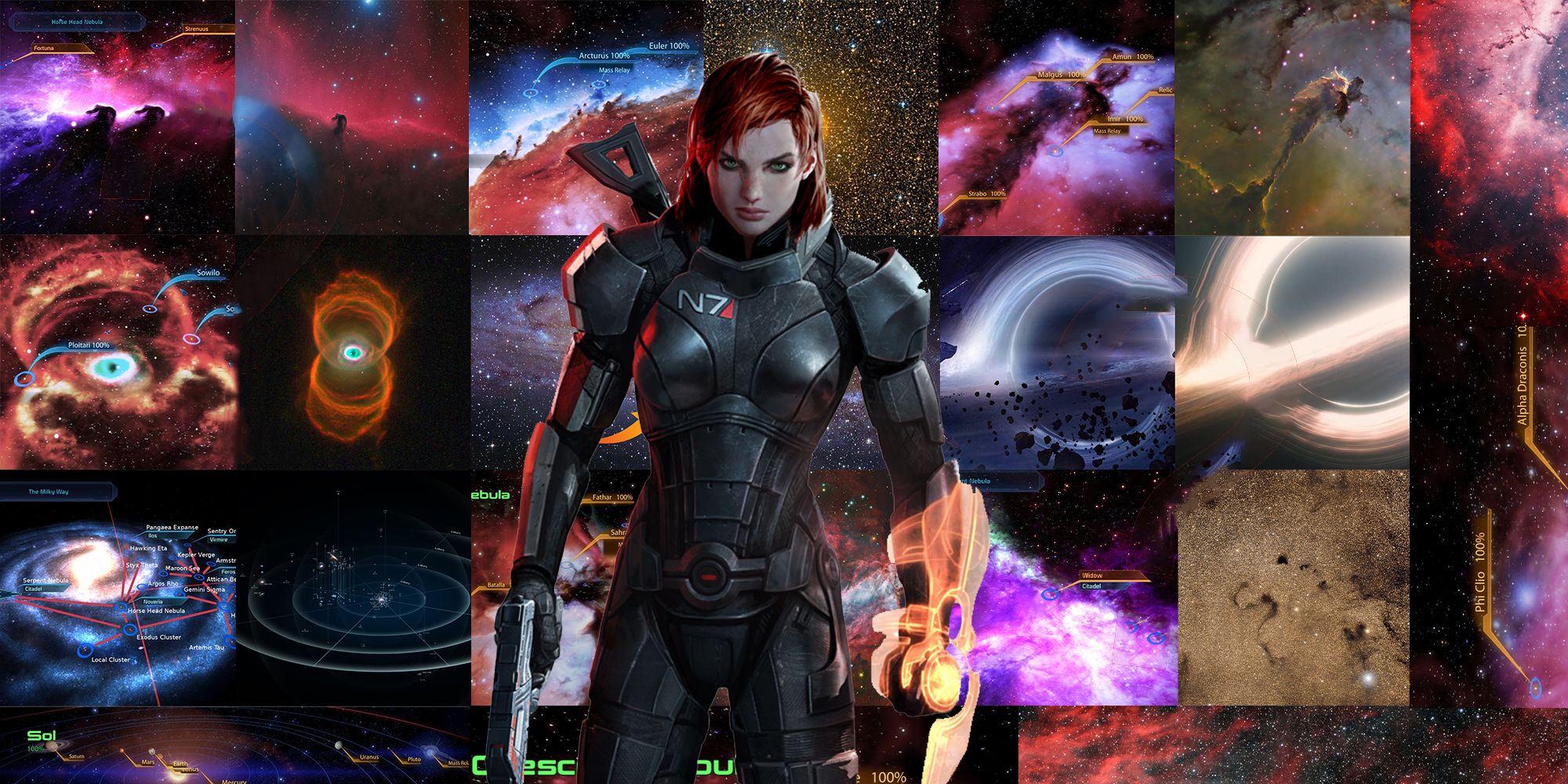
Trying to sift through all the planets, moons, and other cosmic structures in the Mass Effect universe is a daunting task to say the least. Even though each Mass Effect game's set of history-rich planets gives players a ton to explore, BioWare had to flesh out its version of the Milky Way galaxy with many more features in order to fit its grand space opera of a story. Luckily, the real Milky Way offered plenty of inspiration for crafting entirely new worlds as well as incorporating the awe-inspiring celestial bodies that already exist.
Mass Effect is high-concept sci-fi series that (so far) spans four games - the core trilogy and Mass Effect Andromeda. The sheer number of explorable planets, star systems, civilizations, and mega structures remains nearly as impressive now as was in 2007. With the recent release of the critically well-reviewed Mass Effect Legendary Edition, fans both old and new are exploring this vast expanse of the galaxy once again.
Before the tour of the galaxy begins, it's important to note that the bulk of Mass Effect's real-life recreations are not actually planets. With an estimated 100 billion planets in the Milky Way according to NASA, finding appropriate exoplanets would likely have been a pointlessly Herculean task for BioWare. In order to successfully build a base of planets for side content in a reasonable amount of time, BioWare opted to create most such locations from scratch, limiting its real-life recreations to larger structures that were either fully incorporated or altered to better fit the narrative. Here are some of the real celestial bodies in Mass Effect's Milky Way.
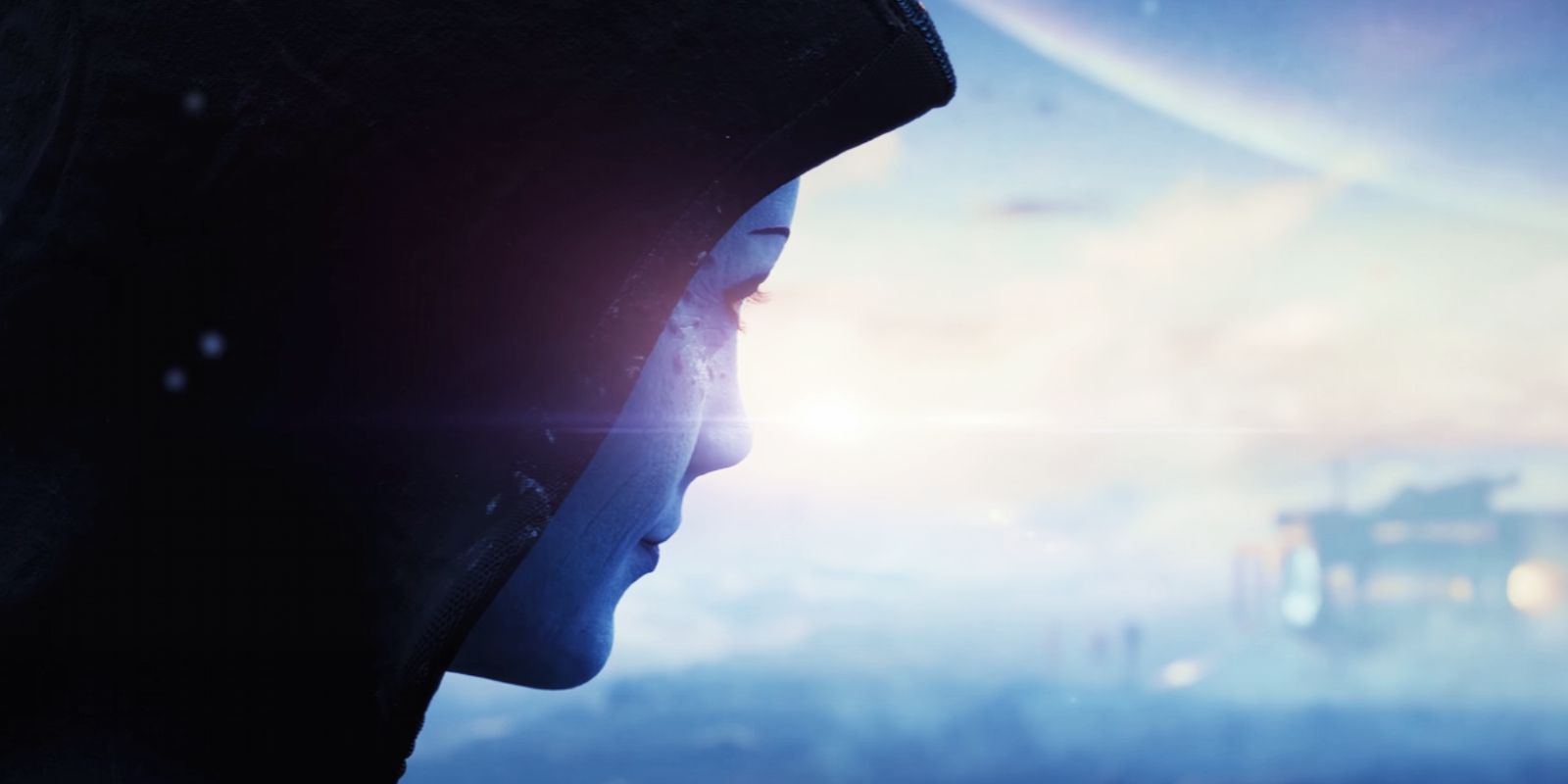
Most of the nebulae featured in Mass Effect are real. For context, a nebula is a large collection of primordial gasses and compounds that are bound together by the gravity of the young stars that form within it (unless they're just leftovers from a supernova). They're not only the birthplaces of stars but entire systems as well thanks to all of the element-rich planets and moons that form from the gasses and debris. Due to their incredible size and dynamic nature, nebulae are some of the most recognizable formations in the galaxy.
From the moment Mass Effect began its development at BioWare, the team looked to sources like the Hubble Space Telescope, shuttle launches, and the International Space Station to find the pictures and science they would need to recreate the galaxy. While some of the names of these nebulae were altered or changed during Mass Effect's development (the real name will appear in parentheses), they are very much real and just as stunning - though they don't look quite so colorful to the human eye, which can't see the depth of their ultraviolent and X-ray spectrums, resulting in some color and shape variation in different color-enhanced photographs.
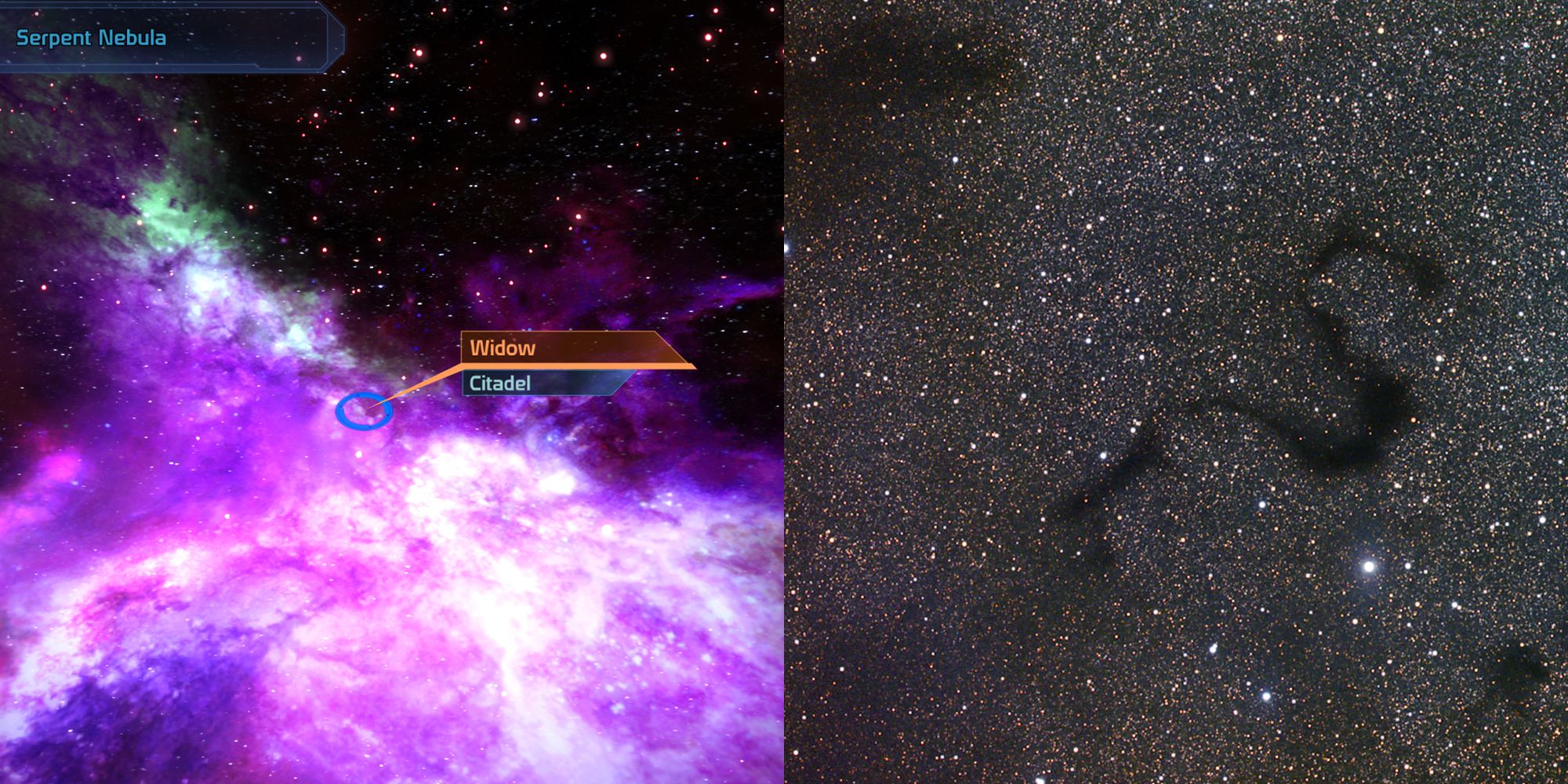
The visual similarities between the two are a little hard to discern and it's not totally clear if the team was attempting to recreate the Snake Nebula or just use its namesake. The real image (on the right) shows how the shape of the snake is produced by the empty space between stars, while the image from Mass Effect depicts a slightly similar structure via the bright white light in the center. Regardless, this nebula is one of the most important in the first game as it is where Mass Effect players finally beat Saren and truly begin their journey to stop the Reapers, and its mirror in the real universe is fittingly iconic as well.
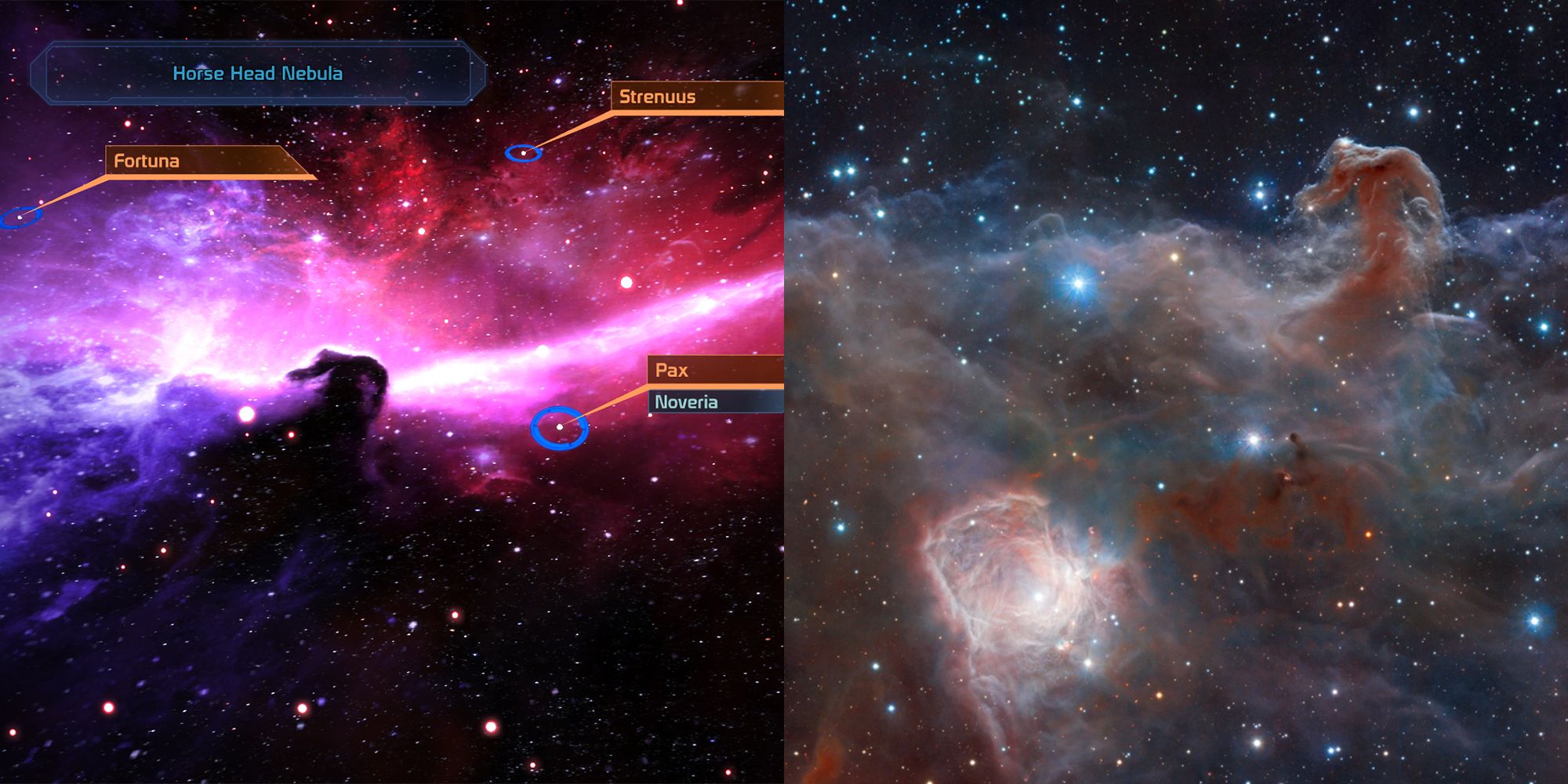
Of all the various nebulae in the game, the Horsehead Nebula is one of the clearest one-to-one recreations, with its visuals closely matching many photographs. The Horsehead Nebula is home to a slew of burgeoning young stars thanks to its hydrogen-rich gas clouds which glow red in many color-enhanced photos from the light of its older stars, and its titular structure is actually formed by an opaque cloud of dust. While the placement of the brighter, older stars and distant galaxies vary between the two, the titular horse head and the color composition mark this as a great example of how these real nebulae enhance the fictionalized universe. Not only is this celestial body home to important moments like fighting Mass Effect's Matriarch Benezia, it visually captures the serenity and majesty of its real-life counterpart.
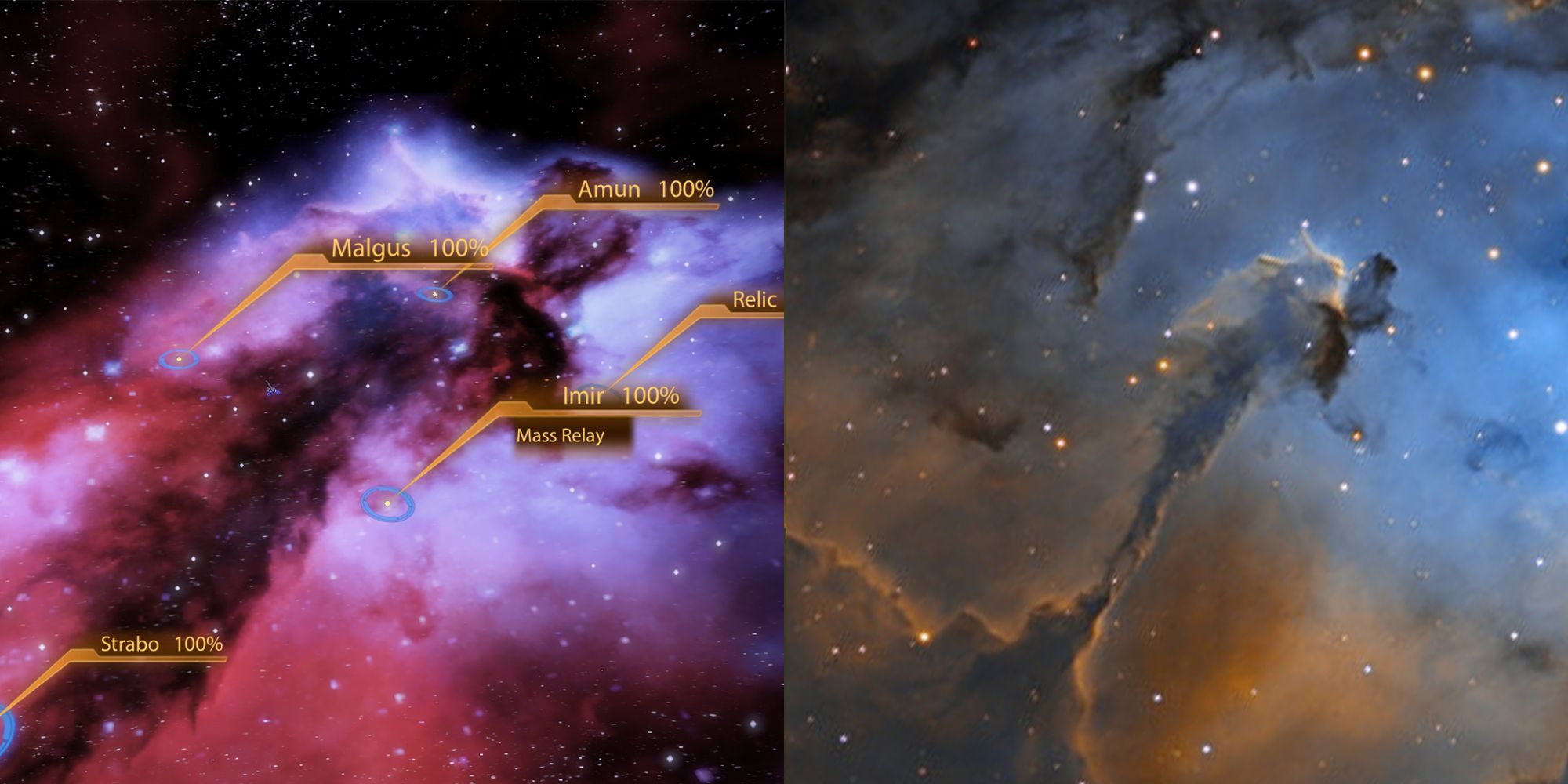
Mass Effect's Eagle Nebula represents one of the more interesting design choices because it represents an incredibly small part of a much larger celestial body. For context, the picture on the right was cropped to highlight the game's accuracy of detail, but if a player could zoom out, they would see that this section is comparable in scale to a person standing next to a skyscraper. It just goes to show that even a game as expansive as Mass Effect can only represent so much of what's truly out in the great beyond.
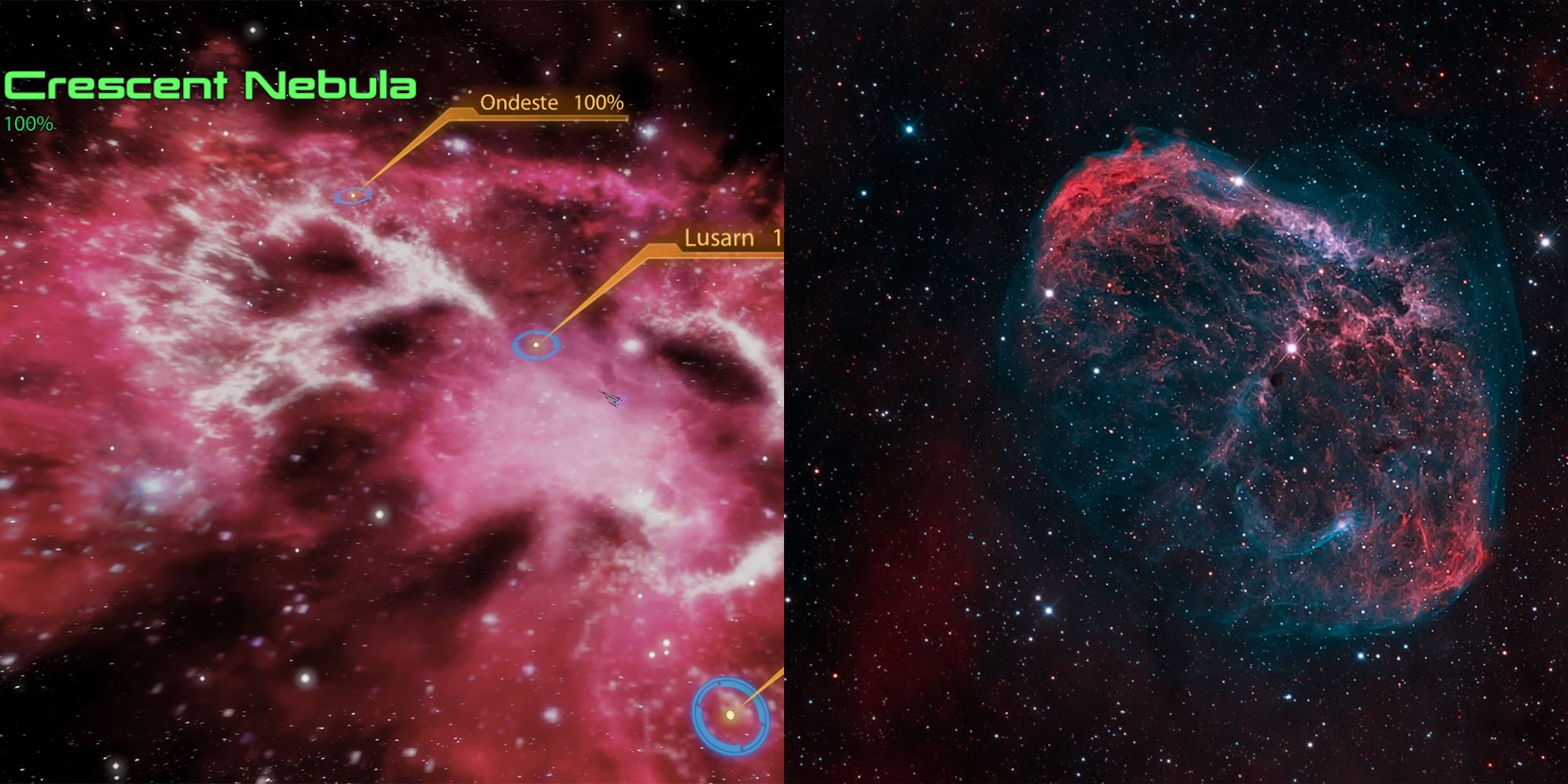
Mass Effect's take on the Crescent Nebula is one of the more visually inaccurate, as the real Crescent Nebula is less like an explosion frozen in time and more like a jellyfish comprised of wispy blue and maroon clouds. Given that it's home to fantastic missions like Lair of the Shadow Broker, the level of visual disparity is a bit disappointing. Mass Effect's Crescent Nebula arguably more resembles the Crab Nebula, which, according to NASA, is the aftermath of a supernova. The colors are different, but it has a similar gas and debris formation as Mass Effect's Crescent Nebula, including a brighter center - the result of a rapidly spinning pulsar at the nebula's core.
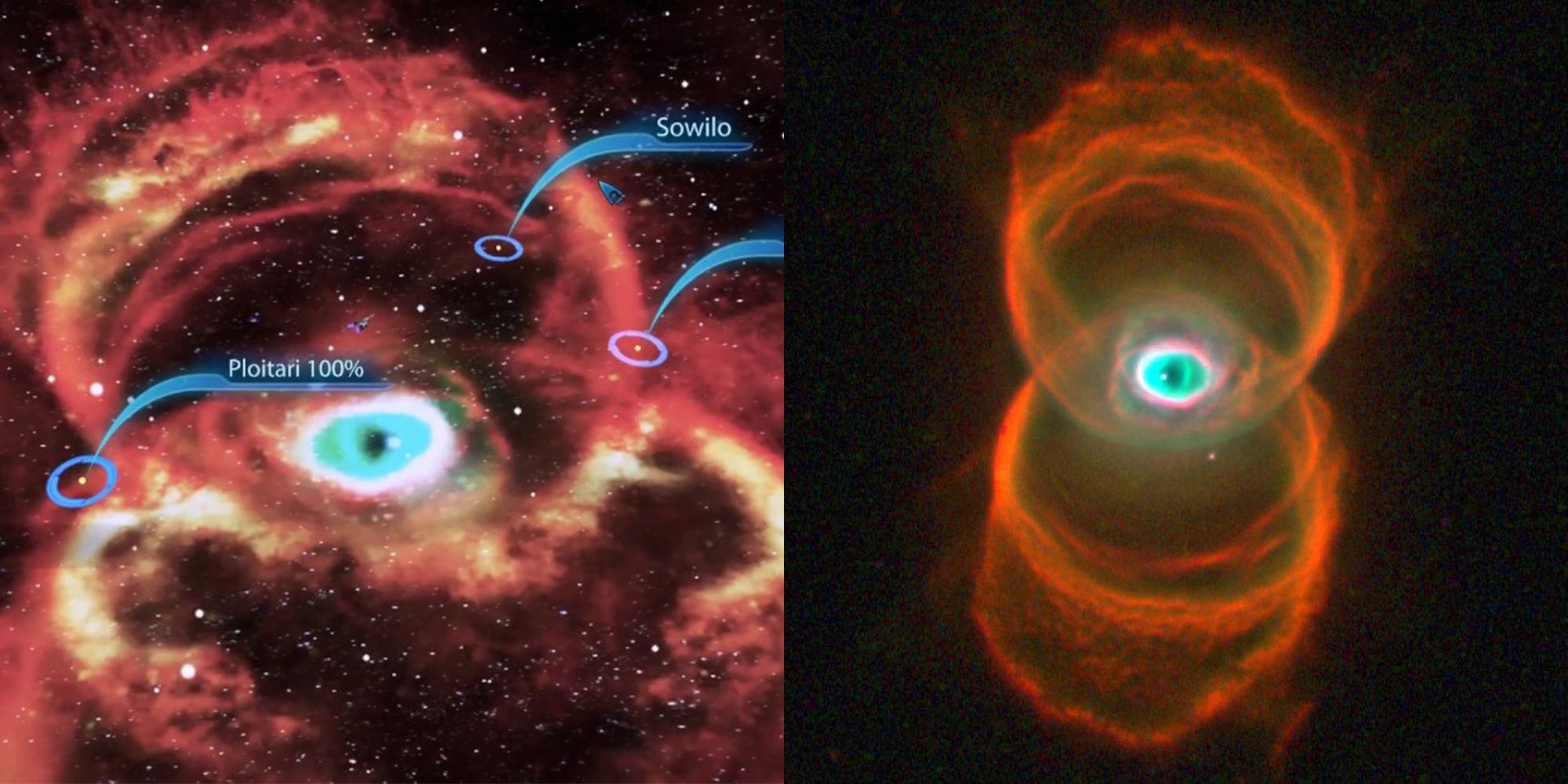
In contrast, Mass Effect's Hourglass Nebula is a near-perfect recreation of one of the galaxy's most striking celestial forms. Even 8,000 light years away from Earth, the Hourglass Nebula looks as if it's watching everything unfold while offering very little to the game's explorers given how sparse resources are in many of its locations. The Hourglass Nebula is still crucial to the Normandy, however, since it's how players access the Omega DLC and Crescent Nebulae. Whether players are entering the nebula or exiting, the constant stare of this particular celestial body may leave one feeling a bit uneasy.
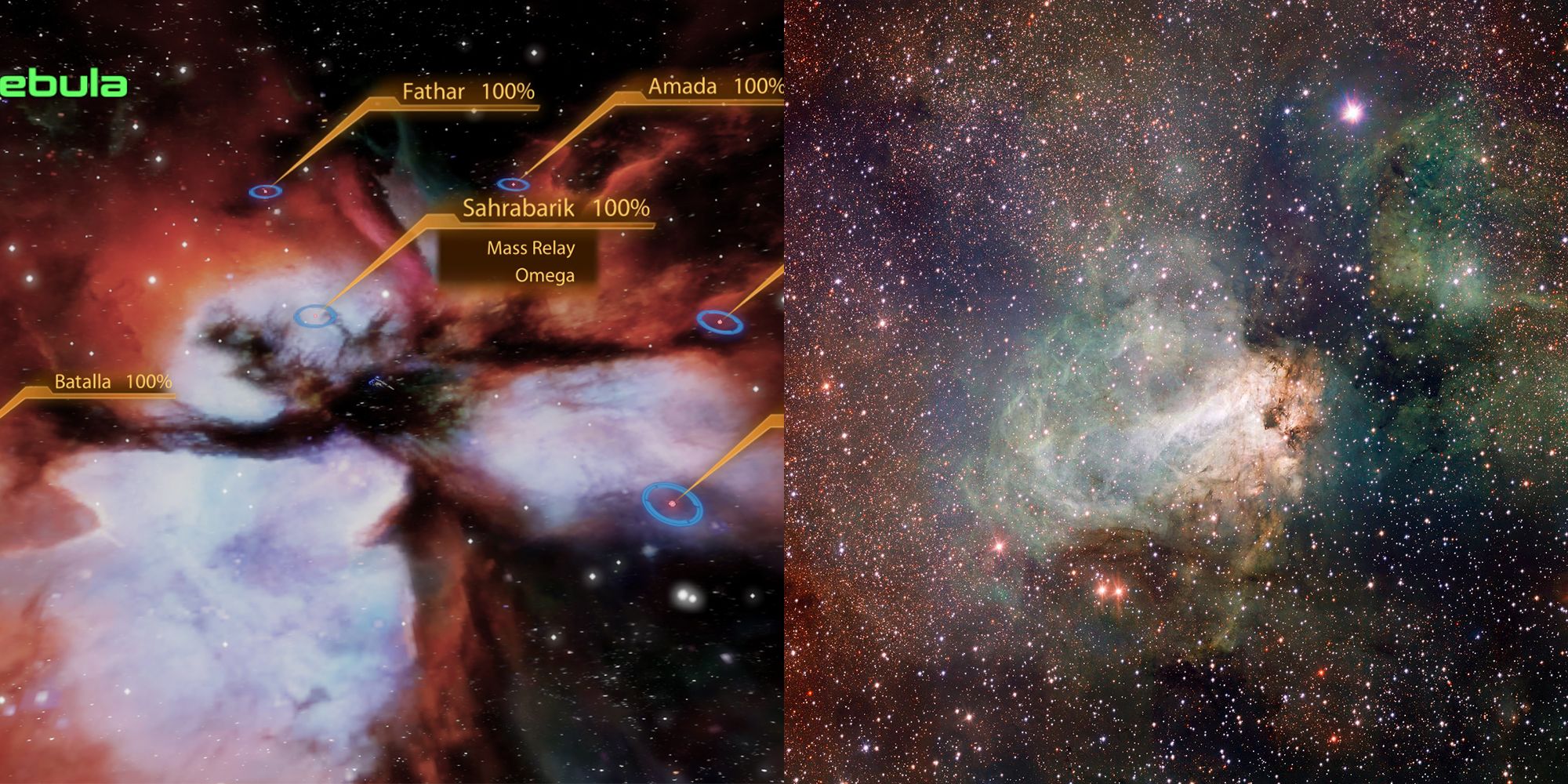
The Omega Nebula is another somewhat vague recreation of its real-life counterpart. The dark figure in the center looks like it could be the white and blue shape in the center of the real image, just flipped horizontally. However, the rest of its features don't really line up either, as it replaces the cloud of red that surrounds the real nebula with flat plains of blue-white light bursting from its center. Like the Serpent Nebula, this may just borrow the real nebula's name more than its likeness, but whatever the Omega Nebula lacks in visuals it makes up for in mystery thanks to the eerie Omega 4 relay which transports players to the Collector Base in Mass Effect 2.
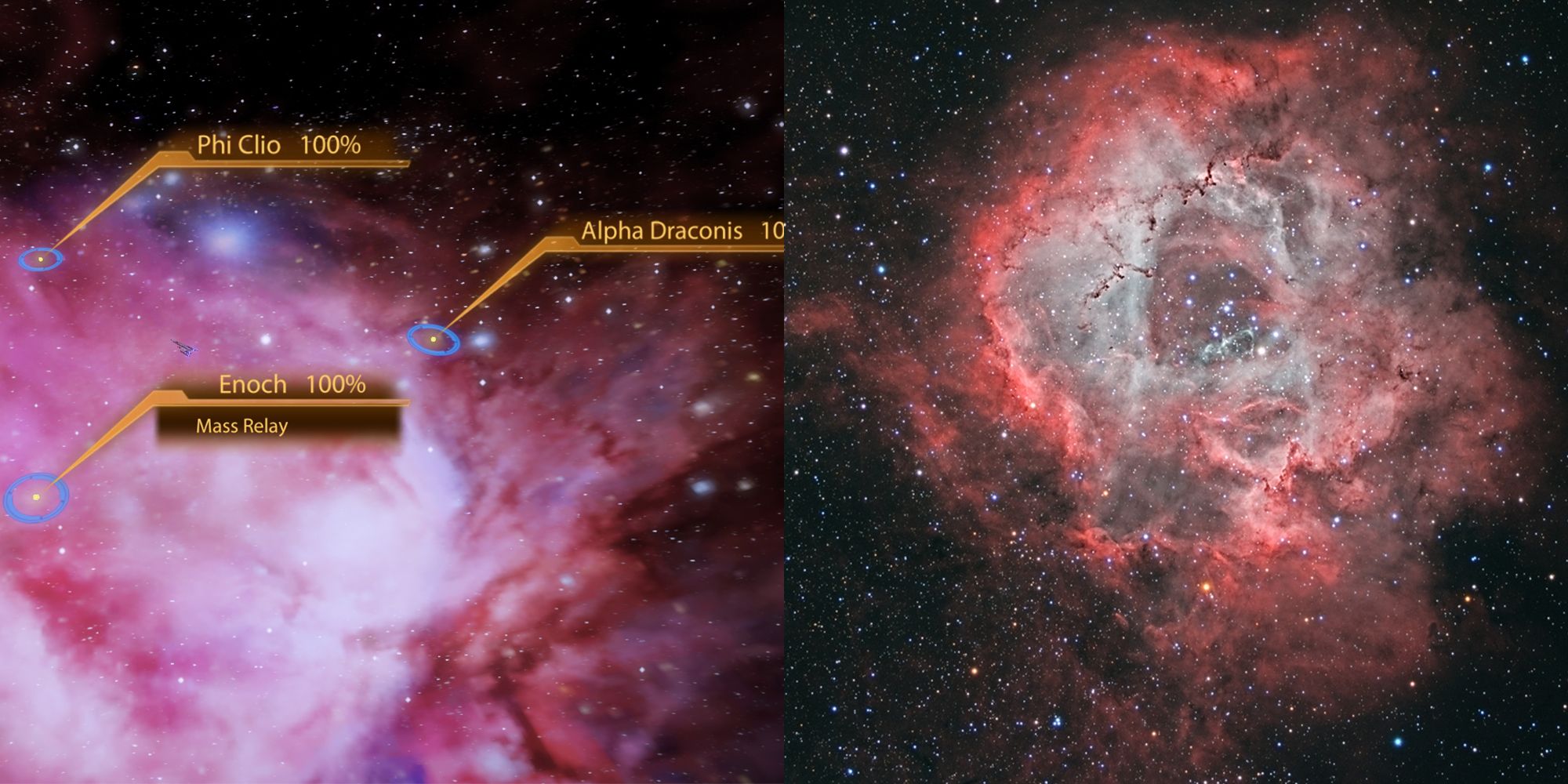
Mass Effect's Rosetta Nebula is merely a shadow of its real-life inspiration and is arguably one of the least accurate. At around 5,220 light years away from Earth, the actual Rosette Nebula is home to a myriad of young stars, such as those shining in its hollow center, and the gas cloud surrounding those stars almost looks like it’s taking the shape of a new system. In contrast, Mass Effect’s Rosetta Nebula looks like a white and pink blob with little in the way of discerning or notable features, though it does reflect the high quantity of stars. While it’s disappointing to see the Rosette Nebula's video game counterpart depicted with a little less inspiration, the Rosetta Nebula makes up for it with the heart-wrenching Mass Effect 2 loyalty mission, Jacob: The Gift of Greatness.
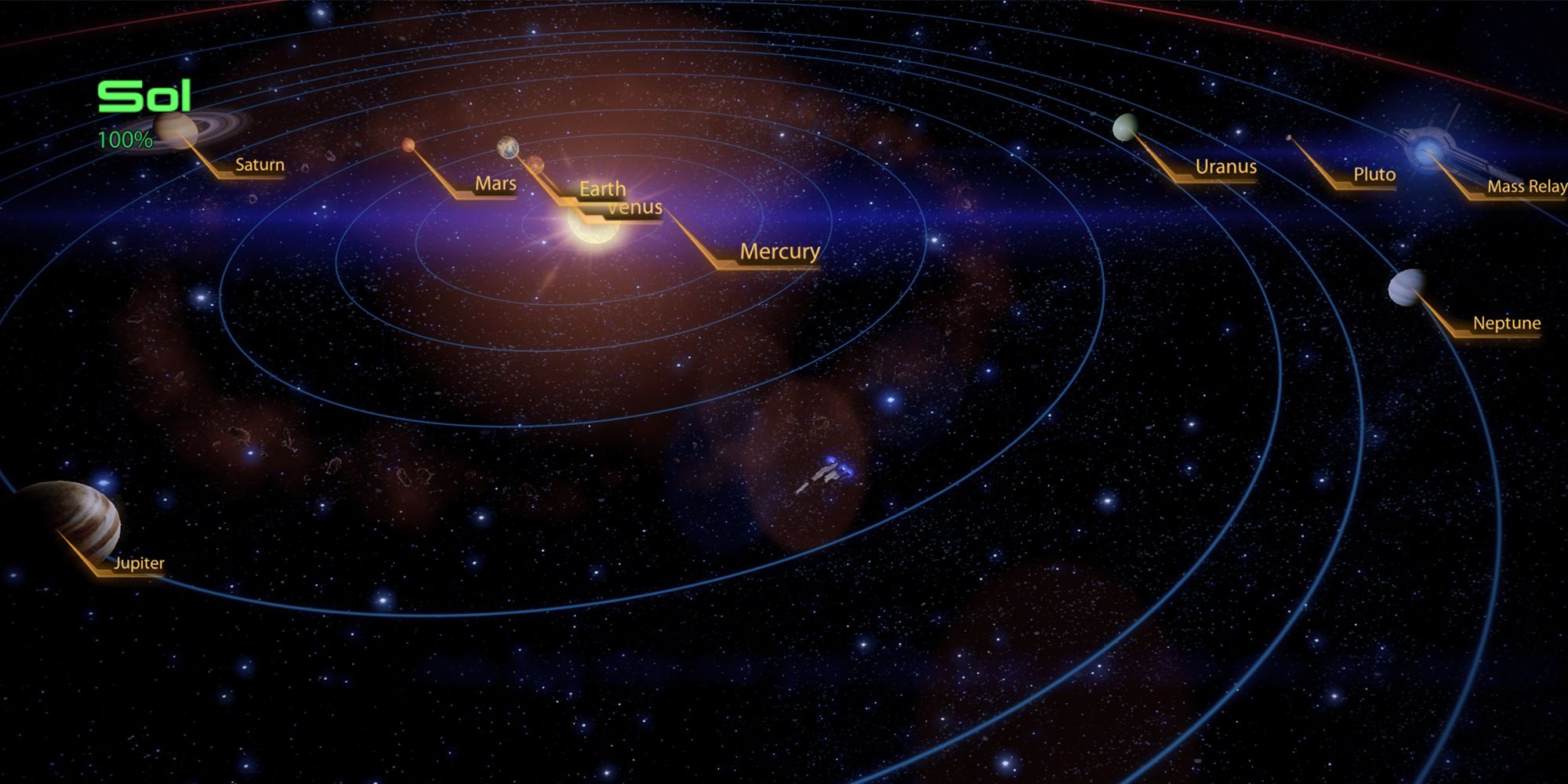
Given the breadth of nebulae present in Mass Effect, as well as the handful of miscellaneous celestial bodies still to come, the real-life representation of planets and moons is pretty sparse. The only real planets present in Mass Effect are the ones found in Earth's solar system. This is fairly easy to accomplish given that there are only 9 to represent (with Pluto being included). Looking outside the solar system, BioWare opted not to attempt to recreate any real exoplanets, as it would simply be too big a job given the number required planets.
In a post on NASA's website, the space agency reveals that there are currently 4,000 confirmed exoplanets in existence and thousands of other candidates that are currently being investigated. Those numbers alone have lead to an estimate of nearly 100 billion possible exoplanets in the Milky Way alone. But while BioWare decided to forgo recreating any real exoplanets when designing their version of the Milky Way, that doesn't mean it chose to ignore science. Instead, it took known scientific data about how planets actually form to create a system for automatically generating planets. While the results may not be real, they certainly manage to be realistic.
Mass Effect doesn't just stop at nebulae and the solar system, though. The series also features some other interesting parts of the galaxy in varying capacities that are worth mentioning. While nebulae may be home to various planets and similarly small cosmic bodies, they also live in and around even larger systems. Here are a couple of other real cosmic features in Mass Effect.
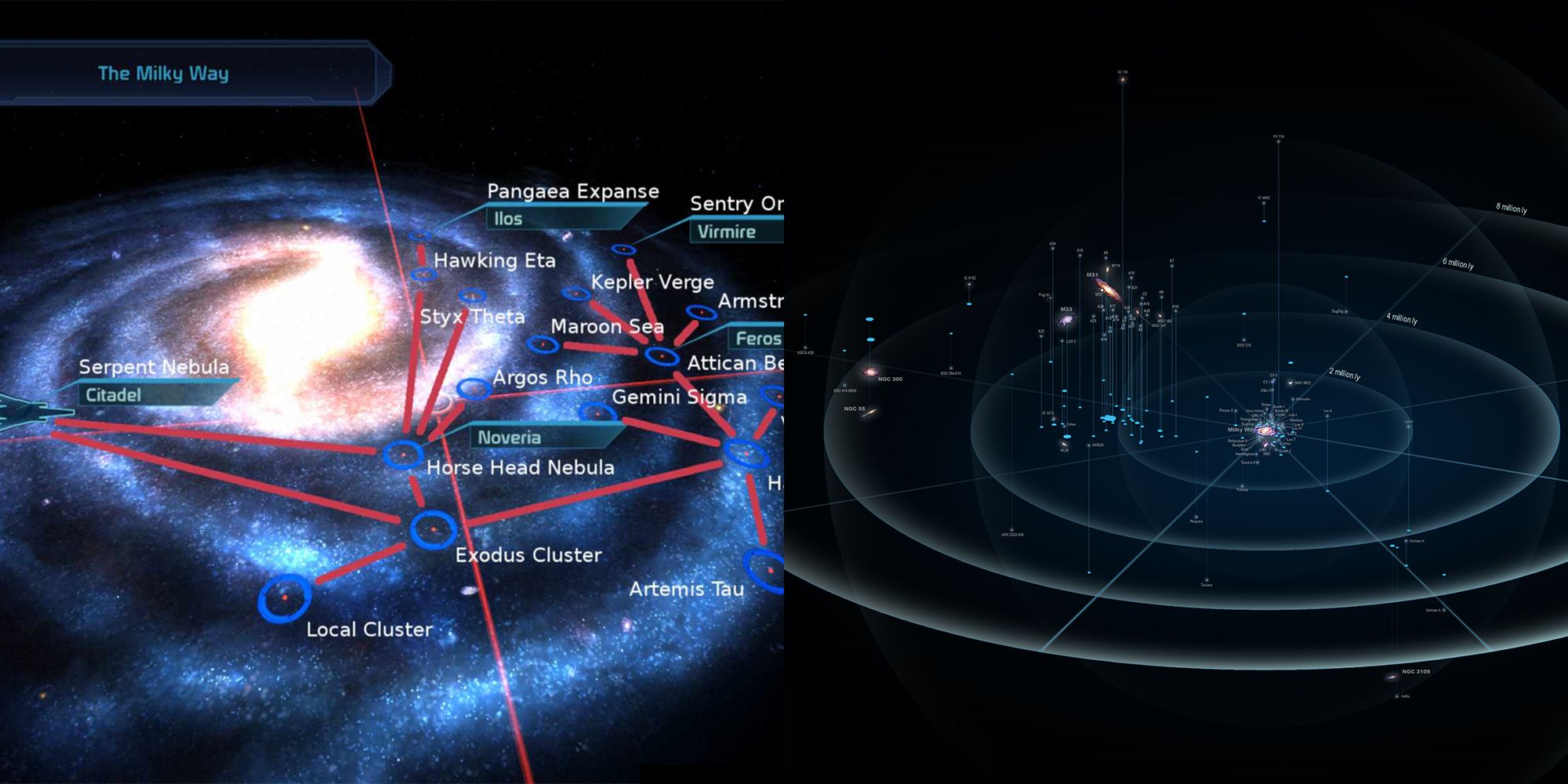
The difference between Mass Effect's Local Cluster and the real-life Local Group is one of the biggest in the entire series, again making it unclear as to where BioWare drew its inspirations. In Mass Effect, the Local Cluster is the part of the Milky Way that is home to Sol, the name of Earth's solar system, and the set-up for saving the Citadel Council later on. According to NASA, the real-life Local Group is the collection of all nearby galaxies that stretches nearly 10 million light years. It's likely home to 30 galaxies, including the Milky Way and Andromeda galaxies, which are most likely at the gravitational center of the whole group.
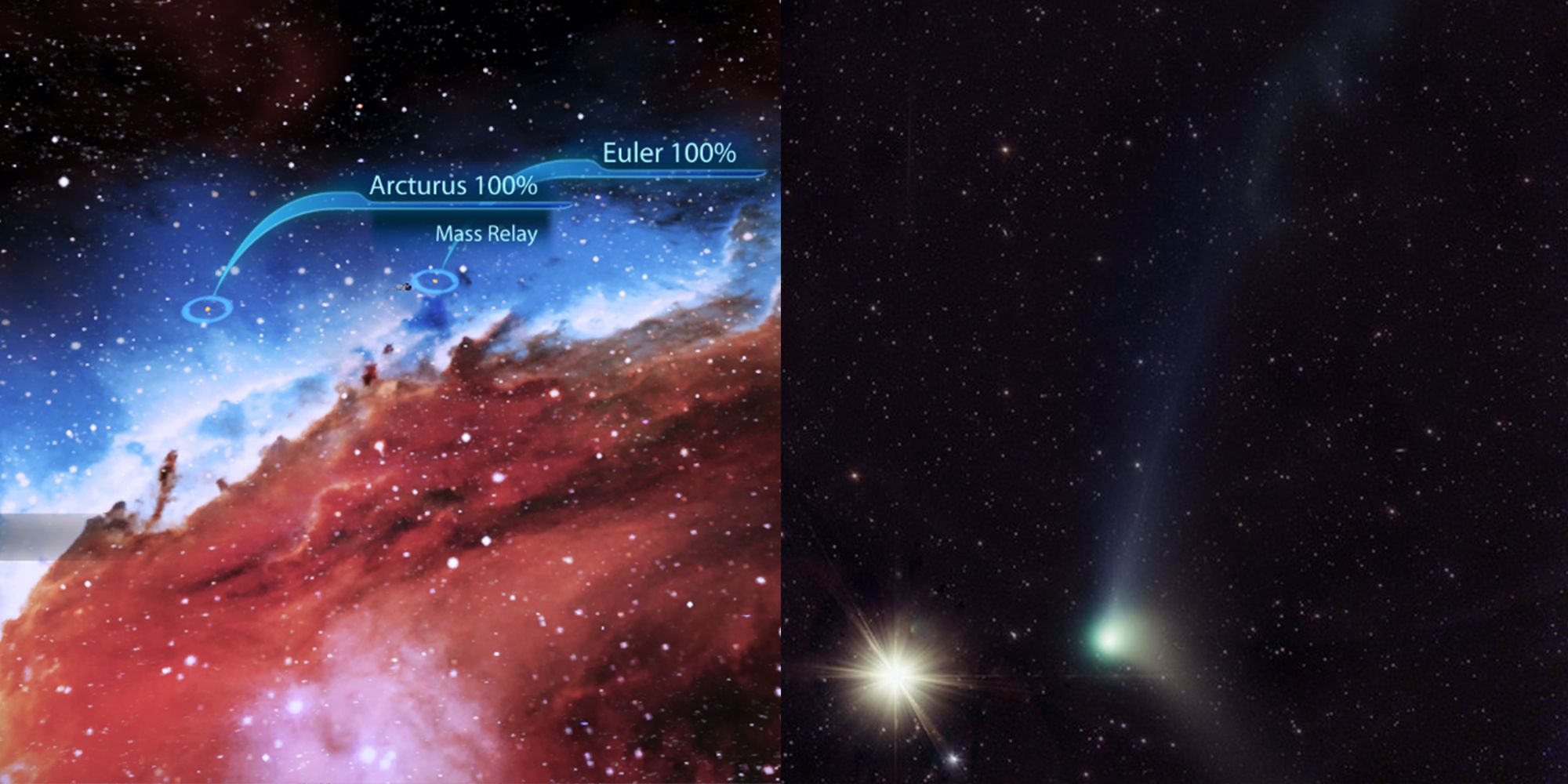
The only differences between Mass Effect's Arcturus Stream and the real-life Arcturus Moving Group are their names and physical representation. Looks aside, the two both represent a cluster of stars, including the star Arcturus, that all seem to be moving in the same direction at the same speed, likely hinting at some sort of deeper physical connection. Not much is yet known about it, and it's a small enough feature of the game, but it remains a mysterious shared element of Mass Effect's Milky Way and the real galaxy.
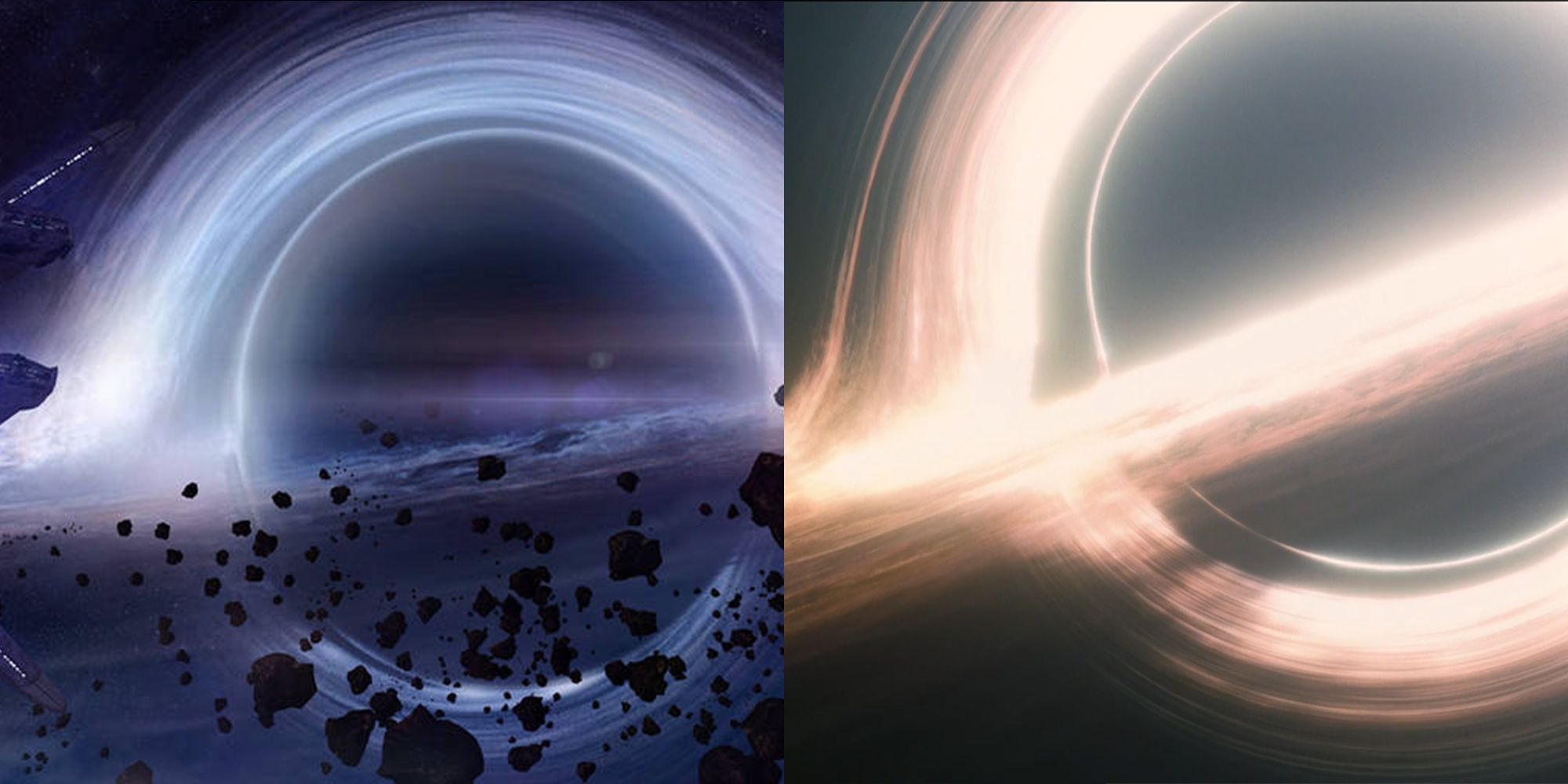
While it's not a recreation of an existing real black hole, the H-012 Ketos Black Hole from Mass Effect: Andromeda does represent a real type of black hole known as Kerr black boles. Made famous by the movie Interstellar, Kerr black holes are a kind of spinning black hole whose rotation causes the distinctive light rings that surround it. The visualization on the right the result of a computer creating a simulation based on astronomical data, and since this simulation has been repeatedly replicated, it's now widely accepted as the most accurate representation available lacking the ability to see one up close. When it comes to BioWare's visual and scientific representation of the black holes, it's just as accurate as current models.
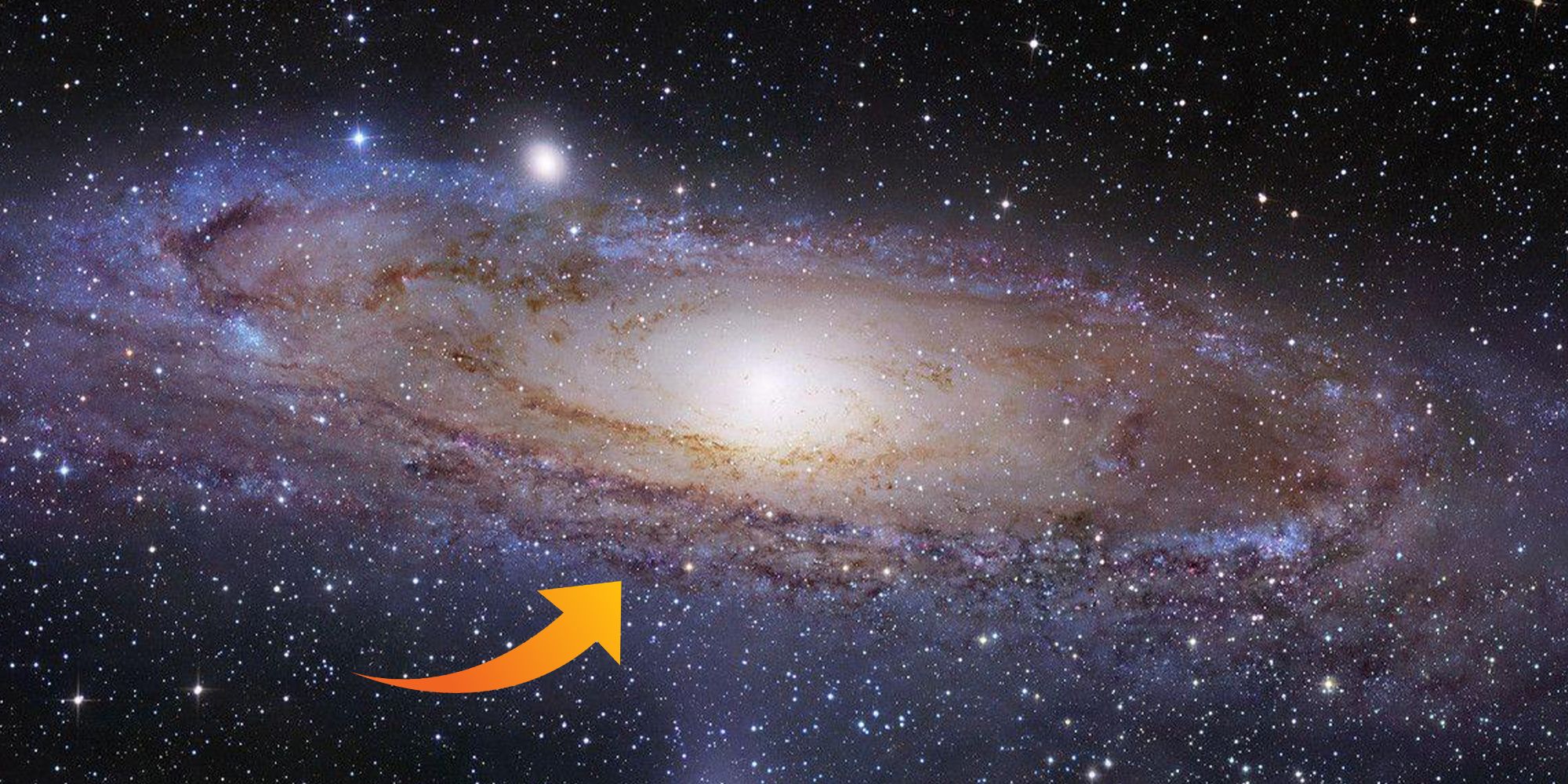
Finally, the perfect end to Mass Effect's real-life journey is none other than the edge of the galaxy - the Far Rim. In reality, this feature of the Milky Way goes by various colloquial names (including the Far Rim), but its official name is the Outer Cygnus Arm. As the name suggests, it represents the furthest arm of the spiral galaxy, marking the penultimate end of its reach.
Just like BioWare's exoplanet hurdles, it would be nearly impossible to list all of the smaller details that aren't real in Mass Effect, such as Reapers and other alien life, space travel, made-up nebulae and stars, and so on, though the majority of these are likely pretty obvious. But the number of things based on the actual Milky Way galaxy is nothing to scoff at, and stands as a testament to how real touches can add consistency and believability to fictional settings. The level of detail that Mass Effect achieved across its series is a major achievement, and while the minutiae are not always accurate, they can provide the same feelings of awe and wonder that their real-life counterparts do.
from ScreenRant - Feed https://ift.tt/3hF2ZMa

No comments: